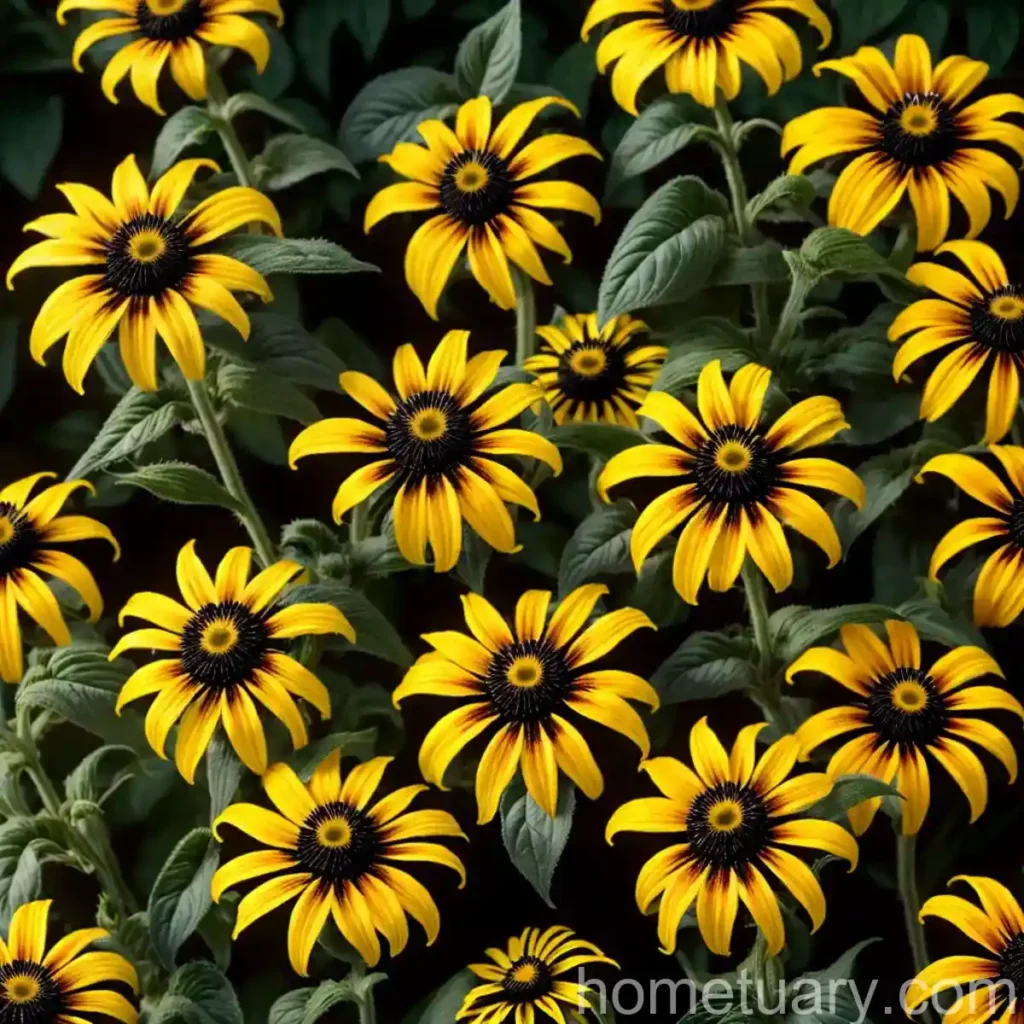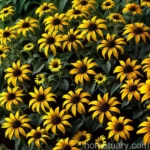Plant Scientist’s Guide to Black-eyed Susan (Rudbeckia hirta ‘Cappuccino’)
In the world of horticulture, the Black-eyed Susan (Rudbeckia hirta ‘Cappuccino’) is a popular and strikingly beautiful plant known for its vibrant and long-lasting blooms. As a plant scientist, I am excited to delve into the details of this lovely species and share my expertise on its culture, uses, care, propagation, and much more.

Image source: My Garden Life
What is Black-eyed Susan (Rudbeckia hirta ‘Cappuccino’)?
Black-eyed Susan (Rudbeckia hirta ‘Cappuccino’) is a herbaceous perennial plant that belongs to the Asteraceae family. It is native to North America and is widely cultivated for its cheerful and daisy-like flowers. The ‘Cappuccino’ variety is particularly distinctive for its unique coloration, featuring warm, coffee-inspired hues that make it an attractive addition to gardens and landscapes.
Key Takeaways
Let’s delve into the key aspects of Black-eyed Susan, from its cultural significance to its horticultural uses and care requirements.
Culture
- Common Name: Black-eyed Susan
- Scientific Name: Rudbeckia hirta ‘Cappuccino’
- Family: Asteraceae
- Native Habitat: North America
Uses
- Ornamental: Black-eyed Susan is primarily cultivated for its ornamental value, adding a pop of color to gardens, borders, and naturalized landscapes.
- Wildlife Habitat: The flowers attract pollinators, such as bees and butterflies, making it a valuable addition to wildlife gardens.
- Cut Flowers: The long-lasting blooms are popular for creating vibrant floral arrangements.
Water
- Watering Needs: Black-eyed Susan generally prefers moderate watering. It is important to ensure that the soil is consistently moist during the initial establishment period.
- Drought Tolerance: Once established, the plant exhibits good tolerance to dry conditions.
Sunlight
- Sun Requirements: Black-eyed Susan thrives in full sun but can also tolerate partial shade, especially in hotter regions.
Fertilizer
- Feeding: A balanced fertilizer can be applied in the spring to support healthy growth and abundant flowering. Avoid excessive nitrogen to prevent overly lush foliage at the expense of blooms.
Soil
- Preferred Soil Type: Well-drained, loamy soil
- pH Range: Slightly acidic to neutral (pH 6.0–7.0)
- Soil Amendments: Adding organic matter can improve soil structure and fertility.
Pruning
- Deadheading: Regular deadheading can promote prolonged blooming and prevent self-seeding.
- Thinning: Periodic division and thinning of the clumps can rejuvenate the plant and encourage vigorous growth.
Propagation
- Seeds: Black-eyed Susan can be propagated from seeds. Sow the seeds in fall or early spring.
- Division: Division of mature plants can be carried out in early spring to propagate and rejuvenate the clumps.
Container
- Container Gardening: Black-eyed Susan can thrive in containers, provided they offer adequate space for root development and good drainage.
Popularity
- Garden Plant: Widely cultivated for its charming, long-lasting blooms.
- Landscaping: Valued for its versatility in garden borders, meadows, and naturalistic plantings.
- Wildlife Gardens: Significant for its role in attracting and supporting pollinators.
Common Diseases
- Powdery Mildew: Fungal disease that can affect the foliage, especially in humid conditions.
- Leaf Spot: Fungal infections can cause spotting and premature leaf drop.
- Root Rot: Excessive moisture or poorly drained soil can lead to root rot issues.
Disease Diagnosis
- Visual Inspection: Look for characteristic symptoms such as powdery white spots (powdery mildew) and dark lesions on leaves (leaf spot).
- Soil Examination: Check for signs of root rot by inspecting the roots for discoloration and decay.
Common Pests
- Aphids: These soft-bodied insects can cluster on new growth and feed on plant sap, potentially causing stunted growth and distorted leaves.
- Japanese Beetles: They can skeletonize the foliage, causing significant damage to the plant.
- Slugs and Snails: These mollusks can create ragged holes in the leaves and flowers.
Botanist’s Tips
- Companion Plants: Pair Black-eyed Susan with companions such as Echinacea, Salvia, and Ornamental Grasses to create visually appealing combinations with diverse heights and textures.
- Natural Pest Control: Encourage beneficial insects like ladybugs and lacewings to help manage pest populations naturally.
- Fall Care: Consider leaving some spent flower heads in place during fall to provide food for birds and an intriguing winter structure.
Fun Facts
- The name “black-eyed Susan” is derived from the dark brown or black center of the flower surrounded by vibrant yellow petals.
- In the language of flowers, Black-eyed Susan symbolizes encouragement and motivation, making it a meaningful gift for a friend or loved one.
Links to External Resources
- Missouri Botanical Garden – Rudbeckia hirta ‘Cappuccino’
- The Royal Horticultural Society – Rudbeckia hirta ‘Cappuccino’
As we delve further into the world of Black-eyed Susan, I will share insights on its growing conditions, maintenance, and ways to enhance its presence in the garden. Whether you are a seasoned gardener or someone who is just beginning to explore the joys of cultivating plants, this comprehensive guide will provide you with the knowledge and inspiration to embrace the beauty of Black-eyed Susan in your own green spaces.
(Word count: 838 words)















